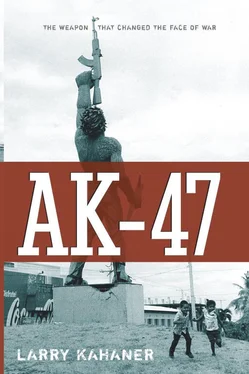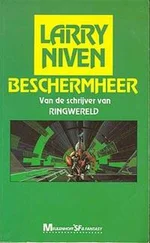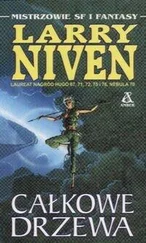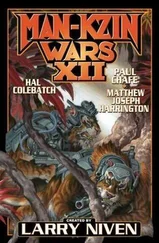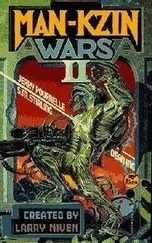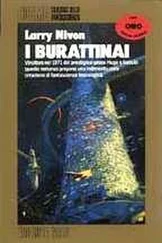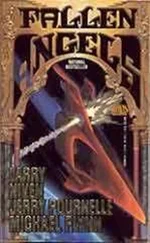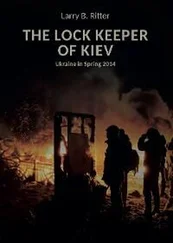Larry Kahaner - AK-47
Здесь есть возможность читать онлайн «Larry Kahaner - AK-47» весь текст электронной книги совершенно бесплатно (целиком полную версию без сокращений). В некоторых случаях можно слушать аудио, скачать через торрент в формате fb2 и присутствует краткое содержание. Город: Hoboken, Год выпуска: 2007, ISBN: 2007, Издательство: John Wiley & Sons, Inc., Жанр: История, military_history, на английском языке. Описание произведения, (предисловие) а так же отзывы посетителей доступны на портале библиотеки ЛибКат.
- Название:AK-47
- Автор:
- Издательство:John Wiley & Sons, Inc.
- Жанр:
- Год:2007
- Город:Hoboken
- ISBN:9780470315668
- Рейтинг книги:3 / 5. Голосов: 1
-
Избранное:Добавить в избранное
- Отзывы:
-
Ваша оценка:
- 60
- 1
- 2
- 3
- 4
- 5
AK-47: краткое содержание, описание и аннотация
Предлагаем к чтению аннотацию, описание, краткое содержание или предисловие (зависит от того, что написал сам автор книги «AK-47»). Если вы не нашли необходимую информацию о книге — напишите в комментариях, мы постараемся отыскать её.
AK-47 — читать онлайн бесплатно полную книгу (весь текст) целиком
Ниже представлен текст книги, разбитый по страницам. Система сохранения места последней прочитанной страницы, позволяет с удобством читать онлайн бесплатно книгу «AK-47», без необходимости каждый раз заново искать на чём Вы остановились. Поставьте закладку, и сможете в любой момент перейти на страницу, на которой закончили чтение.
Интервал:
Закладка:
The fact that the Colombian army began finding these weapons only a few months after the last drop bolsters this scenario, as they knew through their surveillance, perhaps supplied by Montesinos and U.S. intelligence sources, where and when the packages were dropped. With Montesinos involved in domestic scandals now made public, the CIA was perfectly willing to turn him out. This clandestine scheme injured FARC, but it also helped to destroy Fujimori’s administration.
Without ever being used in battle, these AKs brought down a government and changed the face of South America.
With Montesinos and Fujimori gone, Peru is undergoing democratization. The executive branch is becoming more transparent and the Congress is acting as a counterbalance. Both branches are working to weed out corruption and hold accountable the judicial branch of government. Unfortunately, the rebels are also getting stronger and more efficient in their drug smuggling, as evidenced by the price of cocaine, which wholesaled in the United States for $38 a gram in 2003, down from $48 in 2000 and $100 in 1986.
The only bright spot for the Colombian government is that the rebels are running low on 7.62 × 39mm ammunition. In June 2004 former political commandante of FARC Carlos Ploter spoke before the Heritage Foundation in Washington, D.C., and noted, “FARC brought great quantities of AK-47s for which there is no ammunition.” He also testified before a congressional committee that week about FARC’s narcoterrorist activities, saying that drug money was distracting many in the group from pursuing their fight for social justice. In other words, politics was taking a backseat to profits.
THE AK WILL ONCE MORE CHANGE the face of South America. In February 2005, Venezuela’s Marxist president Hugo Chávez confirmed the largest small-arms purchase in South American history. Having survived a 2002 coup, which he claimed was supported and instigated by the United States, Chávez said his government would buy one hundred thousand AKs and ammunition from Russia.
While U.S. officials expressed immediate concern when the deal was announced—Venezuela’s standing army was only thirty-two thousand troops and about thirty thousand national guard—it wasn’t until they learned the exact type of AK that they became truly alarmed. Once again, the technical aspects of the weapon played an important role in changing the political landscape.
Venezuela’s military planned to purchase AK-103s and AK-104s, which were manufactured as part of Russia’s plan after the breakup of the Soviet Union to export small arms to raise hard currency. Desperately in need of money, the Russians wanted to capitalize on their expertise and brand recognition. The AK-100 series, as it was known, featured only minor improvements on the AKM, but it offered several benefits. The Russians had hoped that by producing about a half dozen models with different ammunition choices, Rosoboronexport, Russia’s state exporter, could penetrate new markets worldwide, including NATO nations, with its AK-108, for example, which shoots the 5.56mm NATO round, the same as the M-16. The marketing plan was largely a failure, however, because the Warsaw Pact countries, which were once the largest customers of Soviet arms, had already upgraded their plants and were producing their own AKs. In addition, because of the AK’s almost indestructible nature, and the recent unleashing on the world of Warsaw Pact and Soviet Union arsenals, the market was flooded, at least for the time being. Most of the 100-series models were relegated to storage.
This situation produced a windfall for Chávez, because the Russians had stockpiled thousands of these weapons that they could not get rid of and were willing to sell cheap. Chávez’s interest in the 103s and 104s, which used 7.62 × 39mm ammunition, was at first a surprise to military observers, because the country had a history of using FN-FALs, which shoot the more easily obtained and cheaper 7.62 × 51mm round, the so-called full-sized NATO round. With this large a purchase, he obviously planned to replace the country’s entire arsenal.
But why?
It only took a few days for small-arms experts to suggest that Chávez also was planning to supply FARC, which was desperately seeking this specific ammunition for their AKs. Not only was Chávez sympathetic to FARC’s Marxist ideology, but relations between his country and the Colombian government had been at an all-time low since December 2004, when Colombian troops snatched FARC leader Rodrigo Granda from inside Venezuela. Chávez was incensed that neighboring Colombia would violate his country’s sovereignty.
The 7.62 × 51mm ammunition was used by NATO rifles such as the FN-FAL and often was easier to acquire in regional black markets, but it also was a proxy for Western nations and ideology. By moving FARC toward a bona fide Soviet-style round, the 7.62 × 39mm, Chávez was helping FARC make a true anti-Western statement, a nuance not lost on U.S. military analysts.
Relations between the United States and Venezuela were becoming strained as well, with Secretary of Defense Donald Rumsfeld saying that he thought the purchases would destabilize South America and lead to a regional arms race. Chávez insisted that the weapons would be used by the regular army and planned “citizen militias” to defend the nation against its enemies. As tempers flared, Chávez’s government unexpectedly ended a long-standing military exchange program with the United States. U.S. military advisors were told to leave the country. Chávez also said that he would cut off oil to the United States—which imported 15 percent of its supply from Venezuela—if the U.S. government attempted to force him out of office.
U.S. officials paid less attention to other items on Chávez’s shopping list, including fifty MiG29 jets from Russia and Tucano jets from Brazil. The Pentagon considered these legitimate purchases, because they could be used for border protection and other sovereignty-related activities. Not worried that these large armaments could be turned against the United States or its allies, one State Department official said, “We [can] shoot down MiGs.”
The AKs were a different matter. After decades of underestimating the importance of AKs and focusing on larger weapons, U.S. officials appeared to be reversing their ingrained notions. The “Black Hawk Down” incident in Somalia may have been a factor. They acknowledged privately the devastating effect that AKs could bring to a region and how difficult it was for conventional armies like that of the United States to fight against soldiers armed with them. Even if Chávez intended to deploy them within Venezuela’s borders, Rumsfeld and others expressed concern that they could end up in the hands of drug dealers and other criminals. Speculation also arose and was later confirmed that Chávez was planning to build a factory to produce 7.62 × 39mm ammunition.
Rumsfeld discussed the AK purchase in every public forum available, hoping to draw out specific answers from Chávez about his intentions. At a news conference in Brazil during a hastily organized visit to South America, Rumsfeld said, “I can’t imagine what’s going to happen to 100,000 AKs. I can’t imagine why Venezuela needs 100,000 AKs. And I just personally hope [the sale] doesn’t happen, and I can’t imagine that if it did happen, that it would be good for the hemisphere.”
Chávez did not immediately respond, but Kalashnikov felt compelled to counter Rumsfeld’s official U.S. position. While attending the 2005 IDEX international arms exhibition in Abu Dhabi, an annual trade show that brings together the world’s buyers and sellers of all kinds of weapons from small arms to tanks and fighter jets, Kalashnikov said, “We have been blamed and will be blamed for many things. We need to treat these accusations critically, as they are, as a rule, prompted by the Americans’ desire to bar us [Russia] from entering new markets. I believe we need to continue to promote our Russian weapons on foreign markets, because they must safeguard peace and friendship between nations.”
Читать дальшеИнтервал:
Закладка:
Похожие книги на «AK-47»
Представляем Вашему вниманию похожие книги на «AK-47» списком для выбора. Мы отобрали схожую по названию и смыслу литературу в надежде предоставить читателям больше вариантов отыскать новые, интересные, ещё непрочитанные произведения.
Обсуждение, отзывы о книге «AK-47» и просто собственные мнения читателей. Оставьте ваши комментарии, напишите, что Вы думаете о произведении, его смысле или главных героях. Укажите что конкретно понравилось, а что нет, и почему Вы так считаете.
